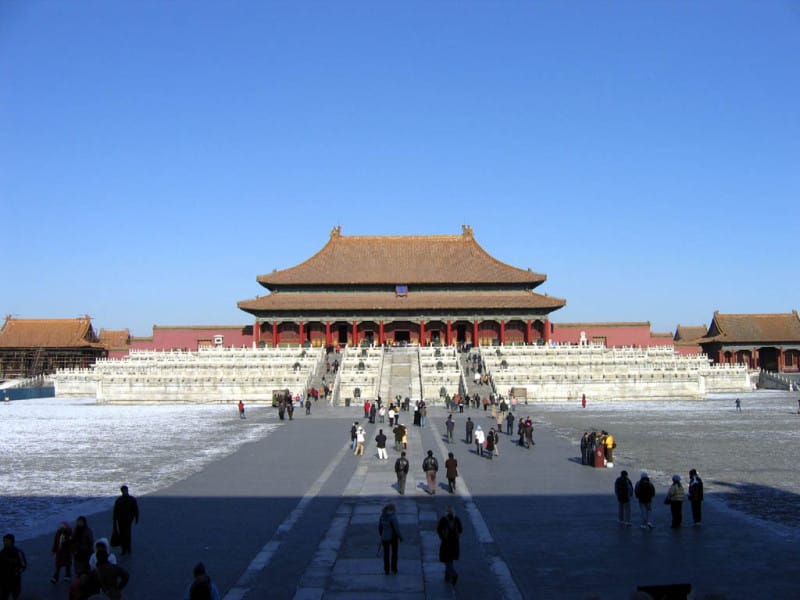A number of historical architectures are so magnificent and built in such a manner that they baffle modern science. Until recently, China’s Forbidden City was among these. But now, friction physics has revealed how workers were able to haul 100-ton stones to the Forbidden City back in the 15th century.
The construction of the Forbidden City was certainly a very laborious task and to complete it, a very intelligent plan was undertaken. Back then, the weather of the region was such that the paths were covered with snow. So the workers first dug up wells every half-kilometer, between the original site of the stones and the place of the Forbidden City.
This was followed by the creation of roads on top of the snow. The huge stones were then slid over this snow to transport them. To further facilitate this operation, water was sprinkled in front of the stones which further reduced the friction between the snow and the stones and allowed the workers to haul them more easily.
In fact, adding water to the whole operation made a huge difference. Engineers at Beijing University, China and Princeton University, US have concluded in a recent collaborative research that without using water, 338 men would have been required to pull a 123-ton stone. In contrast, by adding water, the same weight could have been hauled by only 46 men.
Further quantifying their calculations, these engineers have revealed that if the stones were to be hauled on logs, that would have been a far difficult task, posing a friction coefficient of 0.2 to 0.4. By dragging the stones on water-sprinkled ice, this coefficient of friction comes down to a mere 0.02. By devising this intelligent scheme, the workers were able to haul heavy stones along a long distance of 43 miles.
[ttjad keyword=”apple-tv”]



